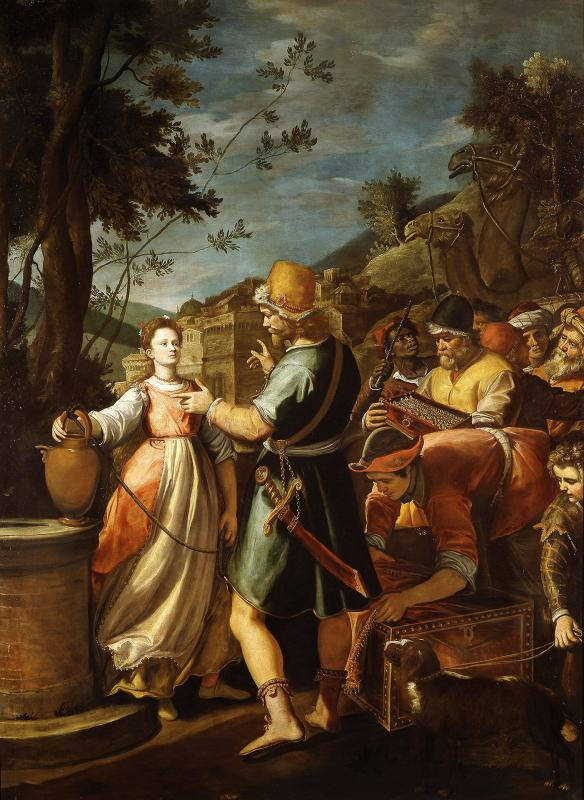Microburst
June 03, 2025

In the Blanton Museum hangs an eleven-and-a-half-foot-tall painting that commands the massive room where it lives. “Rebecca and Eliezer at the Well,” created by Italian painter Santi di Tito, depicts Rebecca as a slight but strong focal point. With shoulders back and an expressionless face, she stands upright, facing Abraham’s steward straight on, ready to receive an invitation that would change her life and the lives of generations to come.
One of my university professors, Hebrew scholar Dr. Jo Ann Hackett, guided our Women in the Hebrew Bible class on a tour of many biblically inspired paintings throughout the Blanton, and it changed my understanding of how we view the Bible, its characters, its stories, and its meaning. Each artist had chosen to draw the characters and scenes in their own time period and context instead of in the context of ancient Israel. At first, this angered and confused me – why would someone take such liberties with the Bible? Wasn’t it more important to be accurate and culturally aware?
Our final project in that class was to imagine:
If you'd never read the story, how would you understand it from looking at this particular print or painting or illustration? Then reread the story in the Bible. Write about the similarities and differences between the understanding you got from the art itself and the understanding you got from reading the text. What did the artist do to the text? How did the artist interpret the text for those looking at it? What did they stress? What did they leave out? What did they change, and where were they completely true to the text?
I have never looked at biblical interpretation the same way. This look through the eyes of artists opened my understanding of several biblical stories, and also opened my understanding of the ways we study the Bible. By setting biblical stories in their cultural context, artists were claiming how the narrative was still speaking in their day. They were giving a way to understand the message, feeling, tone, and call of the passage without a history lesson. Further, they were able to see themselves and their neighbors in the stories.
Think about what art has opened your understanding. What are your favorite artistic depictions of Bible stories?
Grace and peace to you.